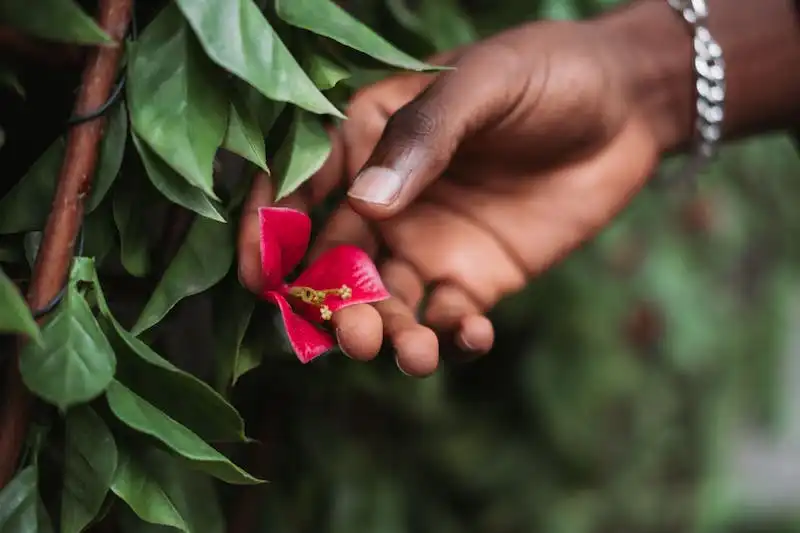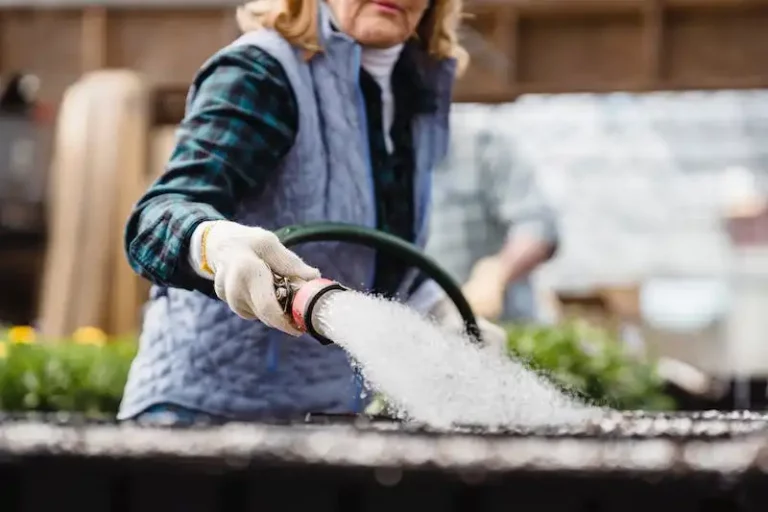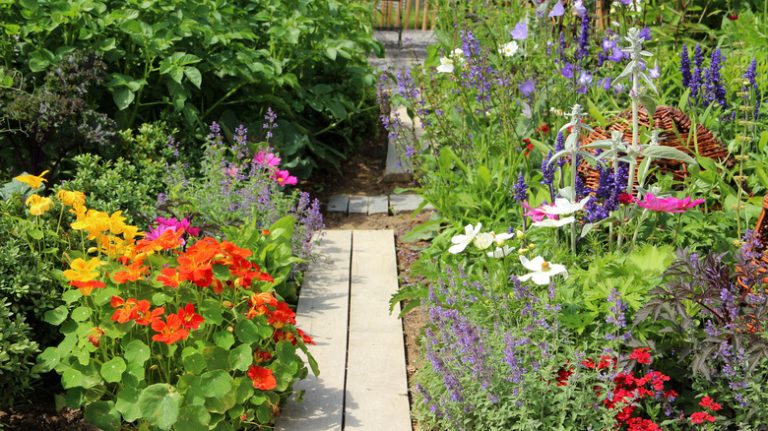Bergenias are excellent shade-loving plants that can add a pop of color to any garden. Native to the mountainous regions of Asia, these robust plants are known for their thick, fleshy leaves and beautiful blossoms. In this article, we will provide you with the best tips and advice on how to care for your bergenias, including information on their growing habits, propagation, and solving common problems. Whether you are a seasoned gardener or a beginner, this article is here to help you keep your bergenias healthy and thriving.
A good starting point in the caring process is to choose the best position for your bergenias. These plants prefer a position where they can receive morning light and dappled shade in the afternoon. While they can tolerate full shade, they will often bloom less if they are not exposed to some sunlight. Avoid placing your bergenias in windy areas, as strong winds can damage their leaves and hinder their growth.
Bergenias have a preference for moist, well-draining soil. A loamy soil mixture is ideal, as it retains the right amount of moisture while allowing for good airflow. If you are planting bergenias in containers, ensure that the pot has drainage holes at the bottom to prevent water from sitting in the roots and causing rot. Water your bergenias frequently, especially during dry spells, as these plants have a high thirst. However, be careful not to overwater them, as this can lead to fungal problems. As a general rule, water deeply when the top inch of soil feels dry to the touch.
Propagating bergenias is a relatively easy task. One of the best methods is by division, and it is best done in early spring or after flowering. Dig up the whole plant and carefully separate the clumps using a sharp knife or spade. Replant the divided sections and water thoroughly. Keep in mind that bergenias have a tendency to be invasive, so make sure to keep an eye on their spreading habits.
When it comes to pruning, bergenias do not require much attention. However, you may need to remove damaged or yellowing leaves to promote healthy growth. You can prune them back in early winter or early spring before new growth begins. If you have the ‘Winterglut’ or ‘Rotblum’ types of bergenias, it is best to prune off the old, damaged leaves in early spring to allow new growth and improve their appearance.
Pests are not a significant problem for bergenias, but some gardeners may encounter leaf miners or vine weevils. Leaf miners create tunnels in the leaves, while vine weevils eat away at the roots and can cause severe damage. To solve these issues, you can remove affected leaves and promote airflow around the plants. For vine weevils, you can use a nematode treatment or handpick them if the infestation is small.
In conclusion, bergenias are beautiful and easy-to-care-for plants that are a great addition to any garden. With the right position, soil, and watering, bergenias can thrive and produce stunning blossoms. Propagating bergenias is also a straightforward process, and they can be divided to create new plants. Keep an eye out for common problems and pests, and you will have a healthy and vibrant bergenias garden.
How to grow bergenia
Bergenia plants are a popular groundcover and are commonly asked about by gardeners. These plants are a great choice for adding color to your garden, with their large foliage and flowers that bloom in the spring. Here are some tips on how to grow and care for bergenia plants:
| Position: | Bergenias prefer a well-drained position in full sun or partial shade. They can tolerate a wide range of soil types, including loamy and sandy soils. |
|---|---|
| Water: | Water bergenia plants regularly, especially during dry periods. However, be careful not to overwater as this can lead to fungal problems. |
| Fertilizer: | Apply a slow-release organic fertilizer in early spring to promote healthy growth and blooming. |
| Caring for bergenia plants: | Remove faded flowers and old foliage to keep the plants looking tidy. Cut back the leaves in early spring to encourage new growth. |
| Propagation: | Bergenias can be propagated by division in early spring or by seed in the fall. Division is the most common method and involves digging up the plant and dividing the clumps into smaller sections. |
| Winter care: | In areas with harsh winters, it is a good idea to mulch around the base of the plant to protect the roots from freezing. |
| Invasive plants: | Bergenias are not considered invasive plants, but they can spread slowly over time. If you want to control their growth, you can dig up and remove any unwanted plants. |
Growing bergenias is a great way to add some color and texture to your garden. With their beautiful foliage and flowers, they are sure to be a standout. So why not give them a try today?
Growing bergenia jump links
When it comes to growing bergenia, there are several steps you can take to ensure a healthy plant. First, you’ll want to choose a sunny position in your garden or container. Bergenia plants prefer full sun to part shade, so make sure they get at least a few hours of direct sunlight each day.
Next, you’ll want to make sure the soil is well-drained. Bergenia plants do not like to sit in wet soil, so be sure to plant them in a location where water will not pool. You can also mix organic compost into the soil to improve drainage and add nutrients.
When caring for bergenias, it’s important to provide them with regular water. They like to be kept consistently moist, but be careful not to overwater as this can lead to root rot. Water the plants deeply, allowing the water to soak into the soil. Depending on the weather and humidity, you may need to water more or less frequently.
Bergenias are quite hardy and can tolerate a wide range of temperatures. They are native to forest regions, so they are well-suited for colder climates. In the winter, their foliage may become damaged by frost, but they will bounce back in the spring. You can help protect them by adding a layer of mulch around the base of the plant.
One of the most attractive features of bergenias is their flowers. They come in several colors, including white, pink, and purple. The flowers bloom in the spring and last for several weeks. After the flowers have faded, you can deadhead them to encourage more blooms.
When it comes to buying bergenias, you have a few options. You can purchase seedlings or potted plants from a nursery or garden center, or you can buy seeds online and grow them yourself. If you choose to grow bergenias from seed, keep in mind that they may take several years to bloom.
Bergenias are a low-growing groundcover plant, with woody stems and bold, leathery green foliage. They can spread to a width of about 2 feet and a height of about 1 foot. The leaves have a thick texture, which is where the common name “elephant’s ears” comes from.
The foliage of bergenias is also quite ornamental. It has a sharp, bumpy texture and can turn a reddish or purple color in the winter. This adds interest to the garden during the colder months when many other plants are dormant.
Bergenias can be planted in the spring or fall. They prefer a well-drained soil that is rich in organic matter. Avoid planting them in wet or boggy areas, as this can lead to root rot. They also prefer a location with good airflow to prevent disease.
In summary, bergenias are a relatively easy plant to grow and care for. They prefer a sunny position, well-drained soil, and regular watering. They are native to forest regions and can tolerate a wide range of temperatures. They have attractive flowers and foliage, and can be grown from seed or purchased as seedlings or potted plants.
Where to grow bergenia
Bergenia plants, also known as ‘winterglut’, are versatile perennials that can be grown in a variety of conditions. They are native to forested areas and prefer to be planted in loamy soil that is rich in organic matter.
Bergenias are shade-loving plants, but they can tolerate full sun as long as the soil remains consistently moist. If you live in a hot climate, it is best to provide some afternoon shade to protect the leaves from heat damage.
When it comes to moisture, bergenia plants prefer to be kept evenly moist, but they can tolerate periods of drought once established. Be careful not to overwater them, as this can lead to root rot. It is also important to ensure good airflow around the plant to prevent fungal diseases.
In terms of caring for bergenia plants, they are relatively low-maintenance. They don’t require much fertilizer and can survive in a variety of soil types. However, they will benefit from a light application of fertilizer in early spring and again in late summer.
Bergenia plants can be propagated by dividing the clumps in early spring or by planting seeds in the fall. They can also be grown in containers, making them a great option for small gardens or balconies.
If you are buying bergenia plants, look for healthy specimens with no signs of disease or damage. Avoid plants with yellowing or spotted leaves, as this may indicate a problem. The root ball should be firm and well-established.
Overall, bergenia plants are a great addition to any garden, providing beautiful foliage and delicate flowers. They are also useful as a companion plant, attracting beneficial insects and improving the overall health of nearby plants.
So, if you’re looking to add a hardy and versatile plant to your garden, consider growing bergenia!
How to plant bergenias
Planting bergenias is relatively simple and can be done in a few easy steps. Here are some guidelines to help you get started:
Potting: Begin by choosing a suitable pot or container for your bergenias. Make sure it has drainage holes at the bottom to prevent waterlogging.
Soil: Bergenias prefer a well-draining soil mix. A good option is a mix of organic matter, such as compost or leaf mold, and sandy soil.
Position: Choose a spot for your bergenias that receives full sun to partial shade. They can tolerate some shade, but full sun tends to bring out the best bloom colour.
Planting: Dig a hole in the soil that is wide enough to accommodate the root ball of your bergenias. Gently remove the plant from its container and place it in the hole, making sure the top of the root ball is level with the soil surface. Fill in the hole with the soil mix and lightly tamp it down.
Spacing: Space your bergenias at least 12 to 18 inches apart to allow for their spread. They can grow up to 18 inches in height and have a spread of around 24 inches.
Watering: Water your bergenias regularly, especially during dry spells or hot weather. They prefer moist but not waterlogged soil.
Caring for bergenias: Bergenias are relatively low-maintenance plants, but they can benefit from some care and attention. Here are some tips:
Fertilizing: Feed your bergenias with a balanced organic fertilizer in early spring and again in late summer to promote healthy growth and blooming.
Dividing: Over time, bergenias can become crowded. To keep them healthy and encourage better flowering, divide them every three to four years in early spring or fall.
Pruning: Remove any damaged or woody foliage to maintain the overall health and appearance of your bergenias.
Pests and diseases: Bergenias are generally resistant to pests and diseases. However, you may occasionally encounter problems such as slugs, snails, or powdery mildew. If you notice any issues, treat them accordingly.
Companion plants: Bergenias make great companions to other plants in the garden. They pair well with other shade-loving plants, such as hostas or ferns.
Winter care: Bergenias are hardy plants that can withstand cold winters. However, you may want to provide some winter protection, such as mulching, in colder climates.
These are just some general guidelines to get you started with planting and caring for bergenias. If you have any specific questions or concerns, it’s always a good idea to consult a gardening expert or refer to additional resources.
Source: This article provides excellent advice on caring for bergenias, from planting to flowering, and is a great source of information on this topic.




